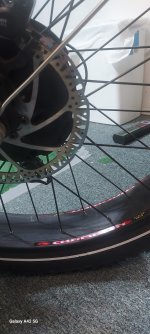Lectriceye
100 W
I have 180mm rotors on front and rear with 160mm caliper posts, which are not adequate for my weight and the long steep decents that I ride regularly. General informations says I should increase the rotor size, which will require a different adapter than the 20mm now in place. The choices of adapters seem pretty standard when going to 200mm rotors but not much information when going to 220mm rotors on 160mm posts (+60mm). Wondering if anyone has done this, was the transition successfully, and what adapters are available? It looks easy to go to 200mm rotors, but I don't want do that and then discover It wasn't enough, and have to do it again.
Last edited:



